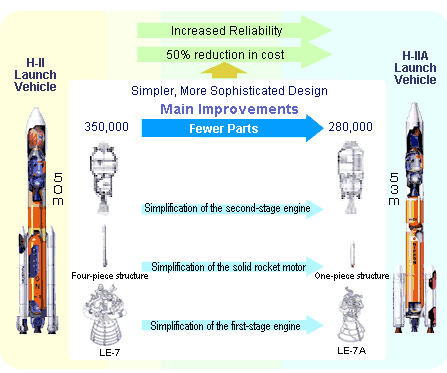 |
||||||||||||||||||
 |
Though the H-IIA Launch Vehicles
were built with technology inherited from the H-II Launch Vehicles, they were
developed as a whole system. From the selection of parts to design and assembly,
everything was revised. The goals of the H-IIA development project were to improve reliability and reduce cost through streamlining and simplification. Also, in reexamining the whole vehicle as one system, focus was placed on ease of use for both manufacturers and end-users. As a result, the cost was reduced by almost half, down to 9.3 billion yen (H-IIA F4). The rockets have proven their commercial value, competitive with any in the world. |
|||||||||||||||||
 |
||||||||||||||||||
|
||||||||||||||||||
 |
||||||||||||||||||